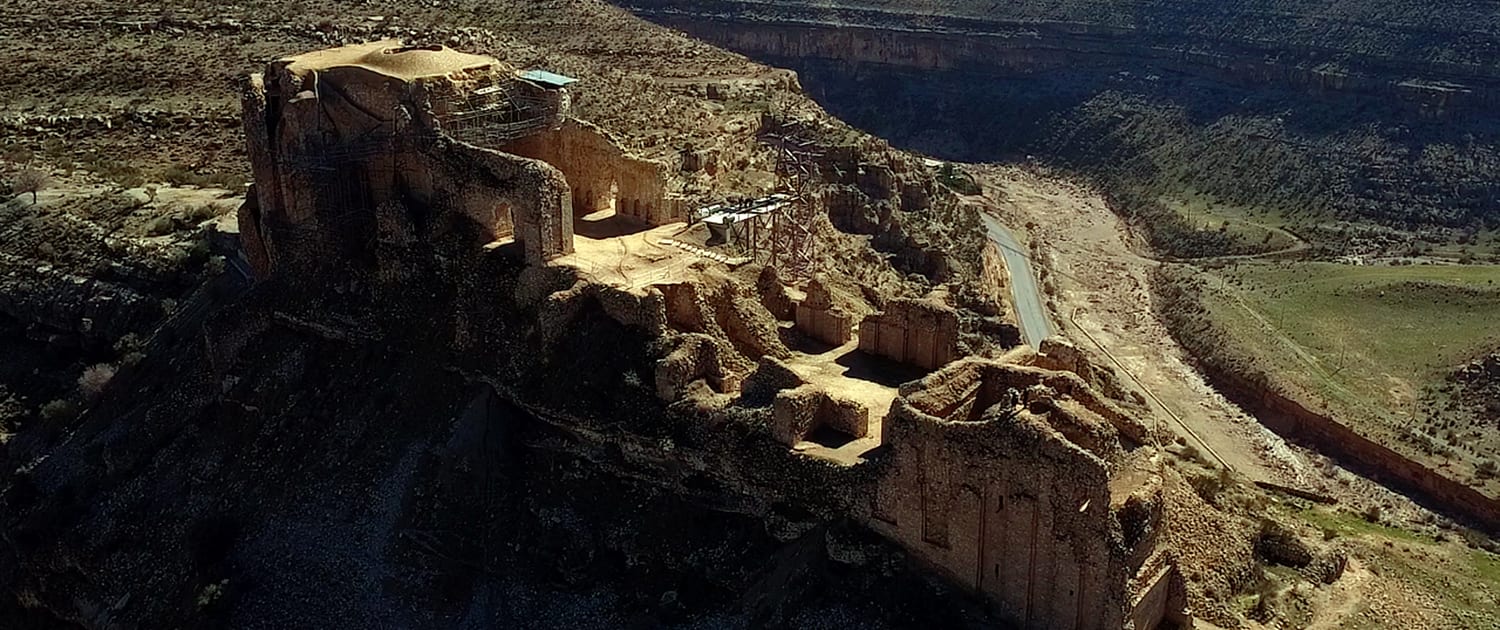Sassanid Archaeological Landscape Listed as UNESCO World Heritage

These monuments consist of eight different archeological sites located in Sarvestan, Bishapur and Firuzabad in southeast of Fars Province. The structures are fortified over time and one can see palaces and city plans which origin from Sassanian Empire that expanded across the region from 224 to 658 CE.
The Sassanid archaeological landscape influenced by the Achaemenid and Parthian cultural and ritual traditions, and their architectural and artistic approaches.
It also influenced by the cultural interchange with the Roman art and architecture, contemporaneous with it. Its significant impact on urban planning, architecture and artistic approaches in the Islamic era is considerable.
Contents
Qaleh Dokhtar of Firuzabad Built by Ardeshir I
Qaleh Dokhtar is a vast barrier Fortress with an inner monumental palace of royal dimensions, built by Ardashir I before his decisive victory against the last Parthian king in 224 A.D.
The architectural decoration of the palace and fortifications is modest and dignified.
Outside walls articulated by shallow, two-stepped niches with horizontal lintels, unlike the arched niches of the later great palace. The main rooms, like those in the later palace on the Firuzabad plain, have deep arched niches with Egyptian cornices, evidently derived from Achaemenid models.
Although the importance of Qaleh Dokhtar certainly declined after Ardashir become the king of all Persia and interior fighting had ended, especially after it had been replaced by the greater palace in the plain, its later use is demonstrated by a dirham coin of Shapur II (r. 309- 79 A.D.).
It seems to have regained importance at the end of the Sassanian empire, when the last Great King, Yazdegerd III (r. 632-51 A.D.), tried to organize resistance against invading Arabs in his home province of Fars.
Copper coins of the Yazdegerd type have been excavated behind the walls of the inner fortress (Huff, 1978, p. 140).
Ardashir Investiture Relief and the Ring of Power
Less than 1 km to the south of Qaleh Dokhtar, the first relief of several rock reliefs of Ardashir I is depicted on the right bank of the valley. Actually with this relief, Ardashir I (224-241) established the Sassanian tradition of rock carving, which flourished until the reign of khosrow II (590-628). In the relief, Ohrmazd is standing and invests Ardashir, also afoot, by handing the ring of sovereignty to him over a fire altar. Behind Ardashir stand the crown prince Shapur and two more princes.
BOOK ONLINE
Shiraz Hotels
The victory relief of Ardashir I over Artabanus V
The last important Sassanian monument, in the Tang-i Ab gorge before facing the Plain Of Firuzabad is the Ardashir victory relief over Artabanous, carved on a surface of a vertical rock at the right bank of the River. This depicts a scene from Ardashir’s victorious battle against the last Parthian king, Artabanus (Ardavan) V, in 224. 18 m long and nearly 4 m high, it is the largest surviving Iranian rock relief. The portrayal is strikingly dynamic as well as rich in detail.
The carving is in relatively low relief and has been damaged by weathering in the lower part.
Ardashir Khurreh (Medieval city of Gur and later Firuzabad)
Remains of the city of Ardashir Khurreh is the most Important Sassanian remain in the Firuzabad Plain. According to the book, “Karnameh Ardashir Papakan”, the main part of the Firuzabad plain prior to the founding of Ardashir Khurreh was a swamp, drained by Ardashir, preparing the ground for constructing the city.
With the creation of land allotting system and water transfer from Tang-i Ab River, agricultural activities, then, developed in the plain. The plan of the old city consisted of different parts as streets, public residential sectors, and the central religious and administrative sector.
Ardashir palace of the Firuzabad plain
Following the city of Ardashir Khurreh, the second important Sassanid structure of the Firuzabad Plain is the Palace of Ardashir (also called Atashkadeh by the local people) located on the north edge of the Plain.
The Palace is located 2 km north of the city of Ardashir Khurreh. The lack of fortifications and its considerably more monumental layout indicates that it built when Ardashir had established his supremacy and military considerations were no longer necessary.
Due to the similarity of its architectural style with Qaleh Dokhtar palace, it undoubtedly belongs to the time of Ardashir. The palace evidently followed the construction system of Qaleh Dokhtar
palace and improved it.
Shapur statue with a height of 6.70 meter
With a height of about 6.70 m and a width across the shoulders of more than 2 m, the monumental statue of Shapur I can be considered the most impressive extant sculpture dating from the Sassanid period (224-652). It is carved out of a huge stalagmite formed in situ. It is rich in details and sculptured on each side with extraordinary care and attention.










